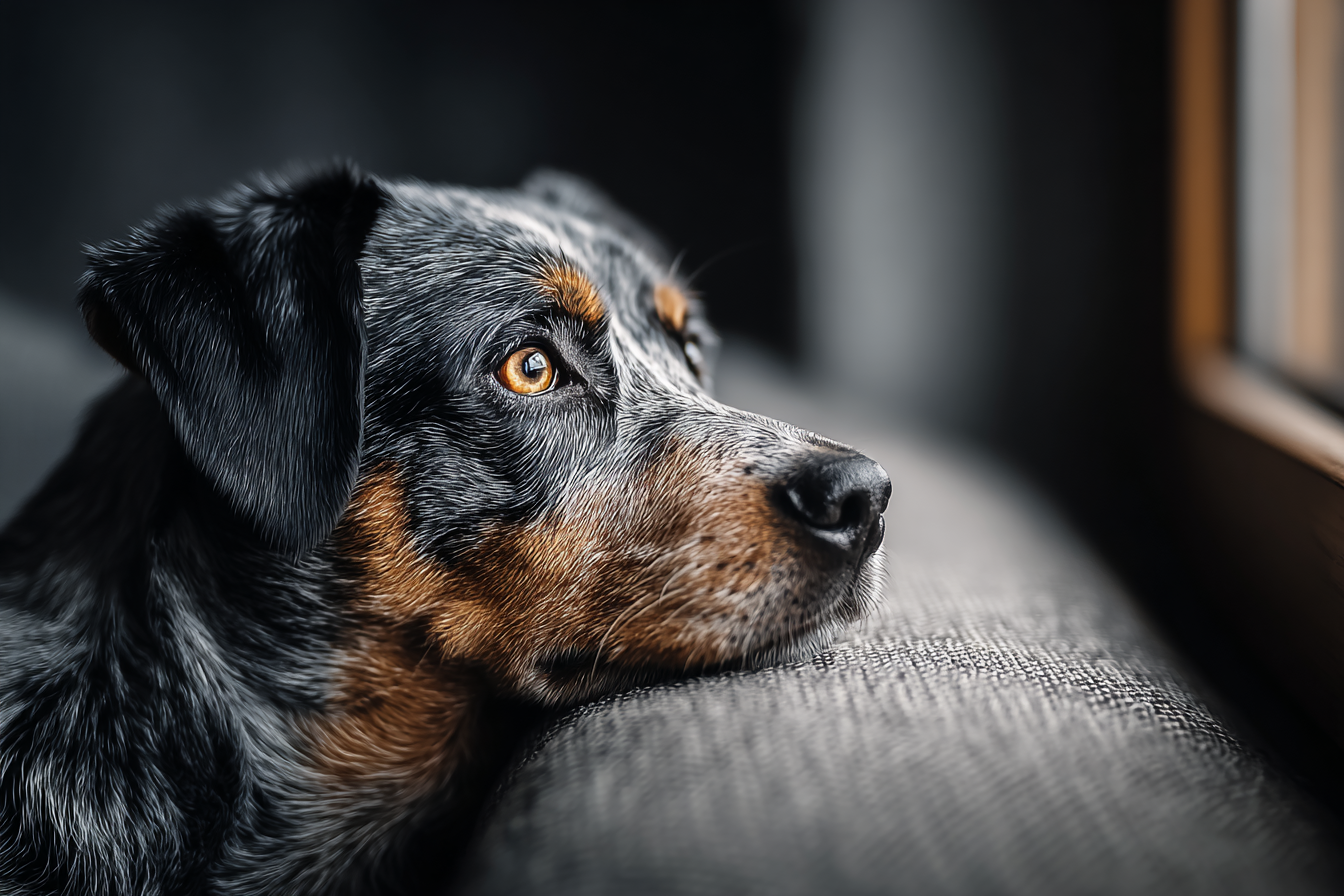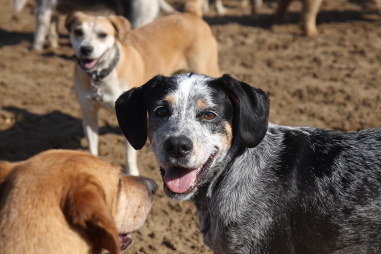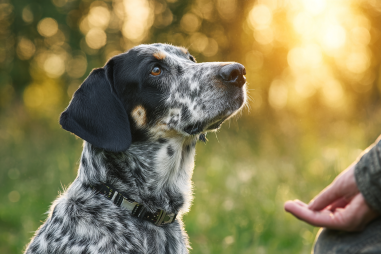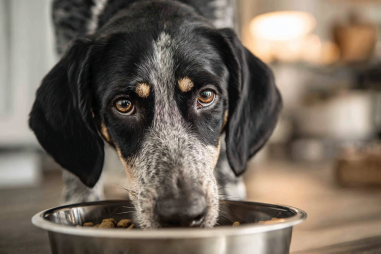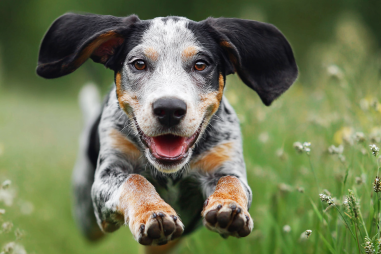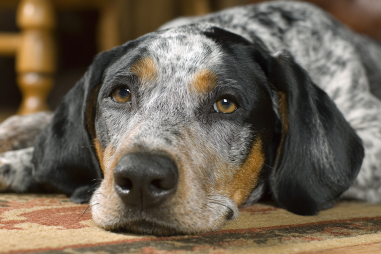Separation anxiety is a common challenge experienced by many dog owners, and Bluetick Coonhounds are no exception. Known for their affectionate and loyal nature, these dogs can feel distressed when left alone, leading to behaviors that can be stressful for both pet and owner. Understanding the causes, signs, and effective management techniques is essential to ensuring your Bluetick Coonhound remains happy and comfortable even in your absence. Let’s explore how to identify separation anxiety in your dog and the best ways to help them cope.
What is Separation Anxiety?
Separation anxiety is a behavioral condition in dogs characterized by extreme distress and anxiety when they are separated from their owners or primary caregivers. Dogs with separation anxiety don’t just dislike being alone; they exhibit intense emotional stress that can manifest in destructive behavior and vocalization. This condition is more than just missing their human companions—it is a psychological reaction that can significantly affect a dog’s well-being and quality of life.
For Bluetick Coonhounds, a breed known for their social nature and strong bonds with their families, separation anxiety can be particularly pronounced. Their history as hunting and tracking dogs means they thrive with interaction and mental stimulation, making solitude especially challenging.
Symptoms Specific to Bluetick Coonhounds
Recognizing separation anxiety in Bluetick Coonhounds involves observing their behavior closely, especially during times when they are left alone. Symptoms can include:
- Excessive Vocalization: Bluetick Coonhounds are known for their distinctive baying and howling, but an increase in volume or frequency of barking or howling when alone may indicate distress.
- Destructive Behavior: Chewing furniture, clawing doors or windows, and destroying household items are common signs that your dog is trying to escape or relieve anxiety.
- Restlessness and Pacing: The dog may seem unable to settle, pacing repeatedly or showing signs of nervous energy.
- Attempts to Escape: Blueticks are resourceful and persistent; they may try to escape from crates, rooms, or backyards, risking injury in an attempt to find you.
- Excessive Salivation or Panting: Physical signs of stress such as drooling or panting heavily can accompany the behavioral symptoms.
- Loss of Appetite: A Bluetick that is anxious might refuse food or treats during or after periods alone.
- Urinating or Defecating Indoors: Even a house-trained Bluetick may urinate or defecate inside when anxious or scared.
Causes and Risk Factors
Separation anxiety can arise from several causes and risk factors that often overlap. Understanding these can help in preventing or managing the condition:
- Change in Routine or Environment: Moves to a new home, changes in the owner’s schedule, or even temporary absences can trigger anxiety.
- Early Life Experiences: Dogs that were adopted from shelters or separated too early from their littermates or mothers may have a higher risk.
- Lack of Socialization and Training: Insufficient exposure to being alone or unfamiliar environments during puppyhood can lead to attachment issues.
- Previous Traumatic Events: Instances such as abandonment, loss of a companion, or traumatic confinement periods may predispose a dog to separation anxiety.
- Genetic Predisposition: Some Bluetick Coonhounds may be genetically inclined towards anxious behavior, particularly given the breed’s sensitivity and strong social bonds.
Training Techniques to Prevent Anxiety
Preventing separation anxiety in Bluetick Coonhounds focuses heavily on building confidence and independence in your dog from a young age. Some key training approaches include:
Gradual Desensitization
This technique involves slowly getting your Bluetick accustomed to being alone by starting with very short separations and gradually increasing the duration. Here’s how to apply it:
- Leave your dog alone for just a few seconds initially.
- Return calmly and avoid making a big fuss to keep departures and arrivals low-key.
- Slowly extend the alone time over days and weeks, monitoring your dog’s reaction closely.
Counter-Conditioning
Pair being alone with positive experiences:
- Give your dog special treats or toys only when you leave.
- Create a safe and comfortable space with familiar blankets and scents.
- Use puzzle feeders or long-lasting chews to keep your Bluetick mentally engaged.
Teaching Independence
Train your Bluetick to enjoy their own space:
- Encourage short periods in a crate or designated room while you are at home.
- Reward calm behavior when your dog stays quietly in their spot.
- Practice leaving the house briefly and gradually extend the time.
Environmental and Behavioral Solutions
Along with training, making adjustments to your Bluetick’s environment can significantly reduce their anxiety:
Provide Physical and Mental Exercise
Bluetick Coonhounds have high energy levels and require regular exercise. A tired dog is less likely to become anxious:
- Daily walks, runs, or play sessions help burn excess energy.
- Mental stimulation with scent games, obedience training, and puzzle toys keeps their minds engaged.
Create a Comforting Environment
Make your dog’s space soothing and inviting:
- Leave an item of your clothing with your scent to reassure your dog when alone.
- Use calming pheromone diffusers or sprays designed for dogs.
- Play soft music or white noise to mask outdoor sounds.
Maintain a Consistent Routine
Bluetick Coonhounds thrive on predictability. Keeping feeding, walking, and playtimes on a regular schedule reduces stress.
Use Technology and Tools
Interactive cameras, treat dispensers, and timers can allow you to check in and reward your dog remotely, making them feel less alone.
When to Seek Professional Help
If your Bluetick Coonhound’s anxiety symptoms are severe or persist despite your efforts, it may be time to consult a professional. A veterinarian or a certified animal behaviorist can provide specialized guidance. They might recommend:
- Behavior modification plans tailored specifically for your dog.
- Prescription medications or natural supplements to reduce anxiety symptoms.
- Training classes that focus on socialization and confidence building.
- Environmental assessments to identify additional stressors.
Early intervention can prevent the worsening of symptoms and improve your dog’s quality of life.
Helping Your Bluetick Coonhound Feel Secure
Dealing with separation anxiety requires patience, empathy, and consistent effort. By recognizing the signs early and applying training techniques alongside environmental enrichments, you can help your Bluetick Coonhound develop the independence and confidence needed to feel secure when alone. Remember that every dog is unique; what works for one might not be as effective for another. Paying close attention to your dog’s behavior and emotions will guide you toward the best methods for managing their anxiety, resulting in a stronger bond and a happier canine companion.

